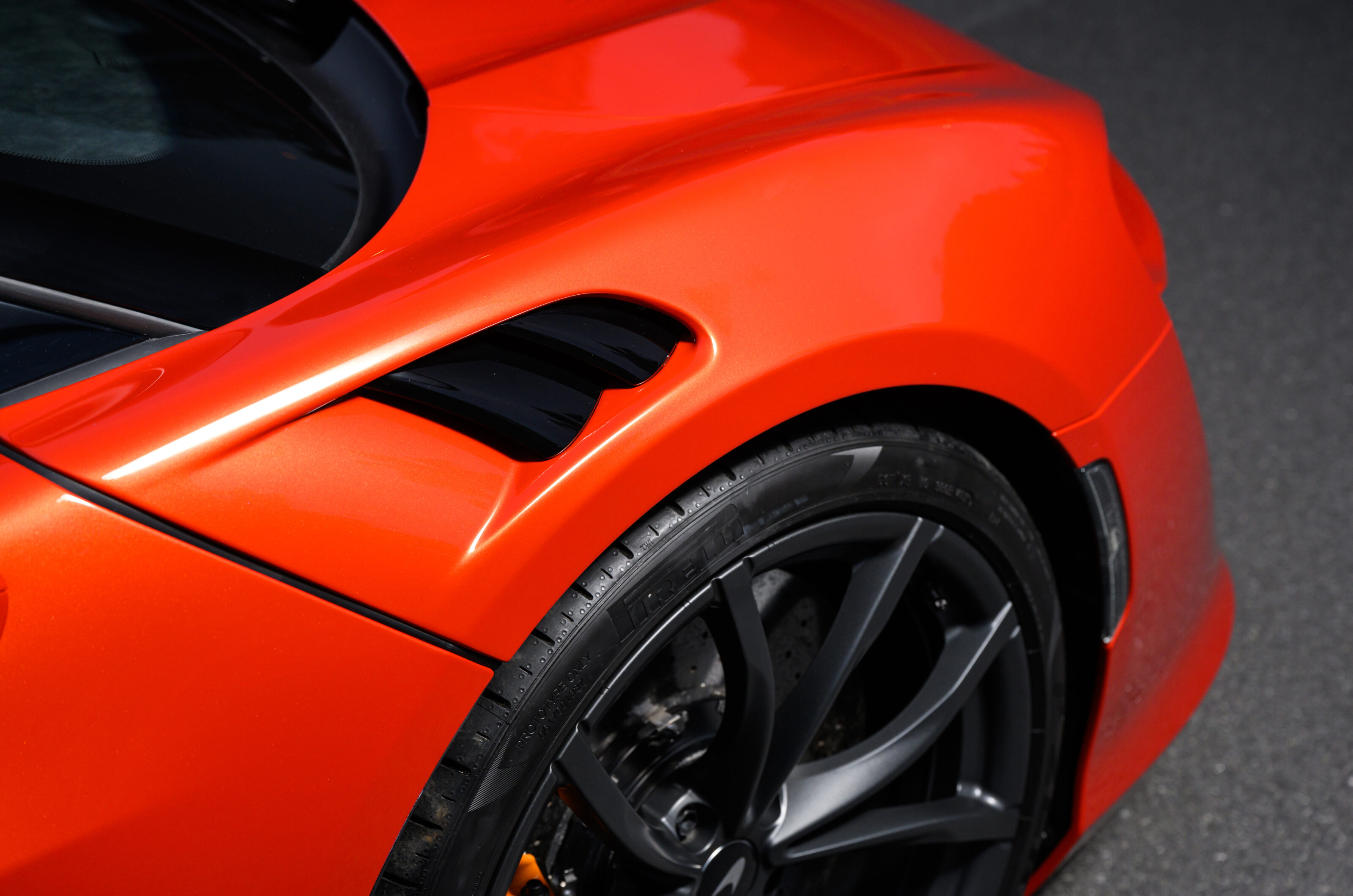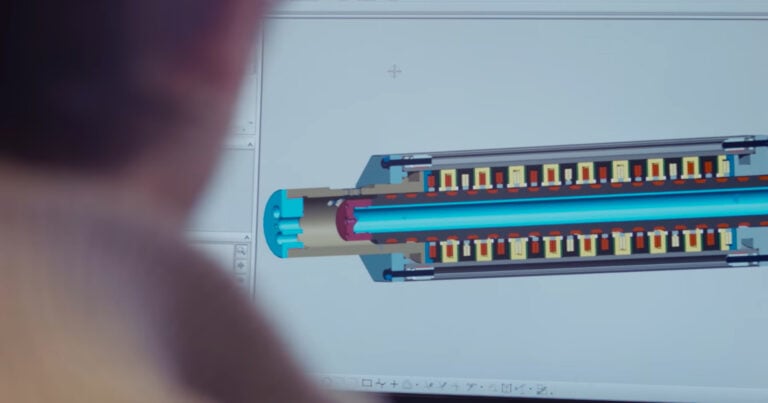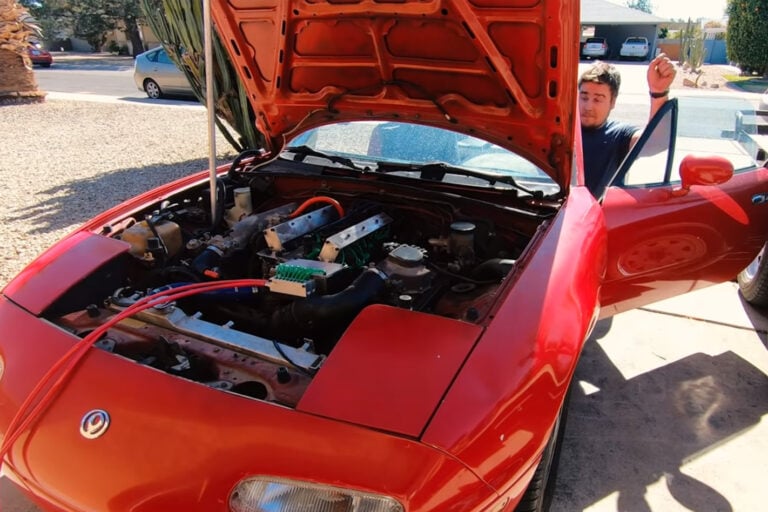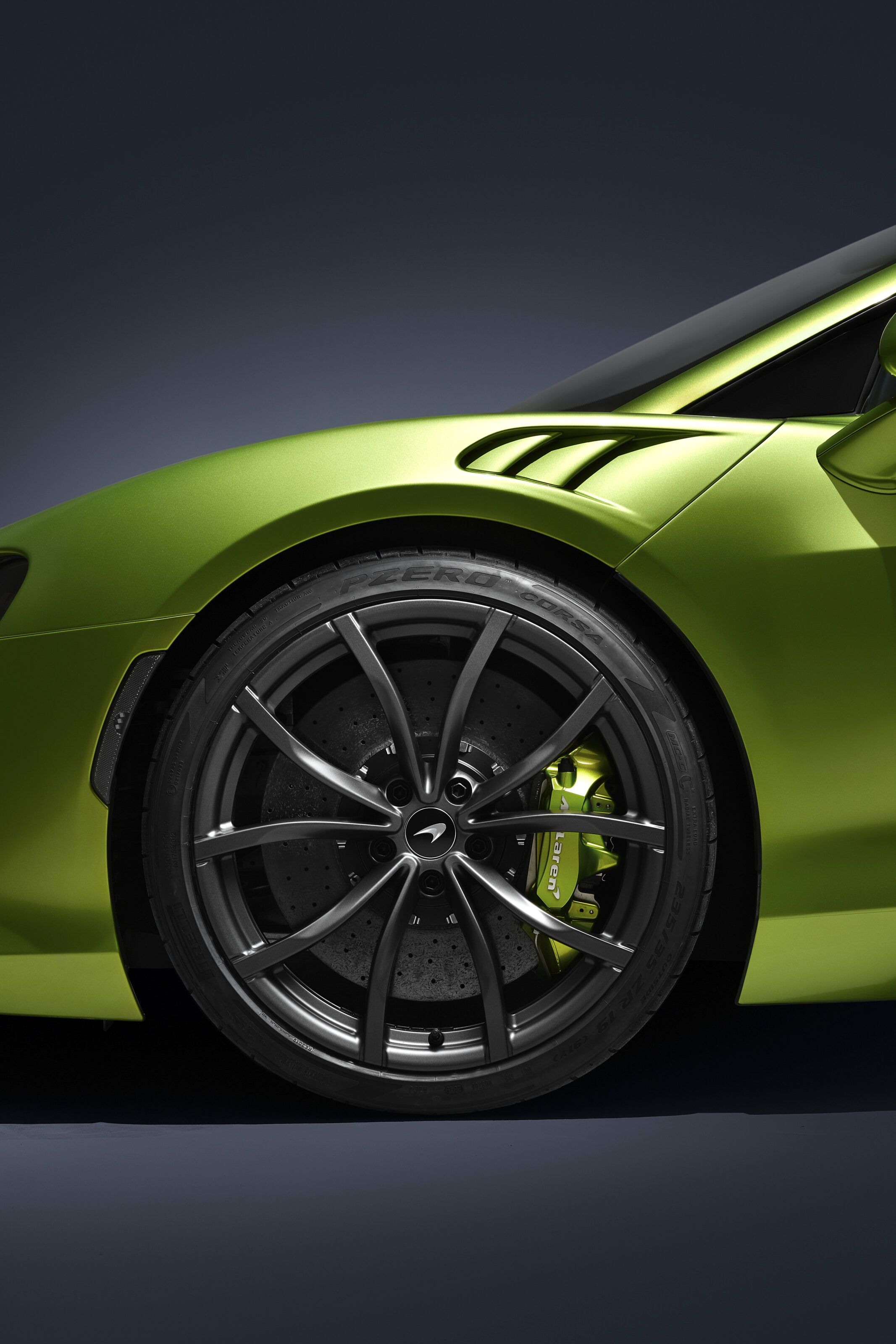Pity the tyre. While the internal combustion gets all the attention as it faces an existential threat, the tyre – vital to every car big, small, fast and slow – has probably made even larger proportional gains but has done so with little fuss or bother.
While the masses prepare to mourn the death of the internal combustion engine, a new era is poised to dawn for the tyre. One that promises ever greater vehicle integration, improved safety, and most importantly, easier to access levels of data.
The first example of this is Pirelli’s Cyber Tyre – fitted as standard to the new McLaren Artura. What makes the Cyber differ from the P Zero rubber fitted to other performance cars of the Artura’s ilk is a sensor that is built into the carcass of the tyre. Say hello to the world’s first ‘smart tyre’.

Tyre sensors aren’t completely new. However, previously they were located in the valve stem in the wheel rim. This limited both the amount and accuracy of information that could be relayed back to the car’s computer. Pirelli is working with OEMs to ensure that the Cyber tyre and a vehicle’s ECU communicate directly to each other.
In its simplest form, Pirelli’s Cyber tyre creates a ‘passport’ for the rubber, which documents whether it’s a winter or summer unit, the speed rating, load index, and ideal pressure. Adding to this it records up-to-date information such as current temperature and pressures.
Currently, the Cyber tyre’s functions are rudimentary – warnings when speed ratings are exceeded, along with the basic functions of current tyre-pressure monitors. The main difference is how accurate the information is, and how quickly it is transmitted.

By linking the vehicle’s computer and tyre sensor, Pirelli says its tyres have the potential to assist adaptive suspension settings, detecting heavy loads, and telling the car to increase settings like, say, pre-load to suit. Additionally, systems like ESC and traction control can be tweaked to correlate with decreasing tyre wear, or changed conditions such as wet or icy roads.
Where McLaren’s application of the technology has us at MOTOR excited is on the track. With the in-tyre sensors providing more accurate information in regards to pressures and temperatures, the Woking engineers, alongside Pirelli, were able to develop a pseudo digital race engineer.
This provides drivers with an indication when the tyres have reached their optimal temperature, as well as warnings on when to cool the rubber back down.

There are further developments in the near future, which will appear alongside expansions of 5G technology and infrastructure. The sensor used in Pirelli’s Cyber tyre is 5G compatible, allowing it to transfer information to not just the car it is fitted to, but surrounding vehicles as well.
Say a vehicle fitted with smart tyres is driving down a road, hits a large patch of water and begins to aquaplane. With the right 5G infrastructure, it would be able to ping a nearby cell tower, which would then alert a following vehicle of the hazard ahead, helping make the driving experience safer for other road users.
While debuting on a McLaren, Pirelli says its technology will soon be able to filter down to more affordable vehicles. This is because while the Cyber tyre doesn’t do much to a vehicles profit margins on a per-unit basis, higher-end vehicles are currently best suited to maximise the smart rubber due to more advanced safety, suspension, and drivetrain systems.
Want the secret to unlocking extra speed at a track day in 2031? It’ll probably have more to do with what rubber you have on each corner of your car than a trick set-up or power-boosting turbo.

Why performance cars will benefit first
Pirelli’s Cyber tyre is currently only available in two variations – the P Zero and P Zero Trofeo. That’s because performance applications will make the most of the technology in the early days. Expect other tyre manufacturers with high-performance manufacturer links to reveal similar systems and products in the not-too-distant future.
Changing pressures
Continental is working on what it calls a ‘Dynamic Pressure’ system, which will be able to change a tyre’s pressures on the fly. This means you can go from pressures best suited to improving fuel efficiency, to track-ready readings, without needing to stop.
V2x gon’ give it to ya
The Cyber tyre concept works perfectly for vehicle-to-everything (V2X) communication systems. Once properly developed, your tyres will be linked to other road users, traffic lights, and more.
EVs just want to have fun
With more performance-orientated electric vehicles on the market, Michelin has had to develop a new tyre that caters to their specific requirements. The Pilot Sport EV has been designed with the eco-friendly track day enthusiast in mind.
Material development
Moving away from performance and toward sustainability, several tyre companies are experimenting with building tyres out of renewable materials. Goodyear uses waste from processing rice husk ash, and converts it into silica for tyres in China.
We recommend
-
 Features
FeaturesHow free-piston technology could save internal combustion, but not as you know it
Forget almost everything you thought you knew about how an internal combustion engine works
-
 Features
FeaturesHow synthetic fuel could save internal combustion in the electric future
Does the future of the combustion engine reside with chemists creating this ground-breaking new technology? Porsche seems to think so...
-
 News
NewsDriveway mechanic fits Koenigsegg freevalve tech to Mazda MX-5
Camshaft delete is about to be the hottest mod of 2021






